How to Measure Customer Satisfaction for Your Business
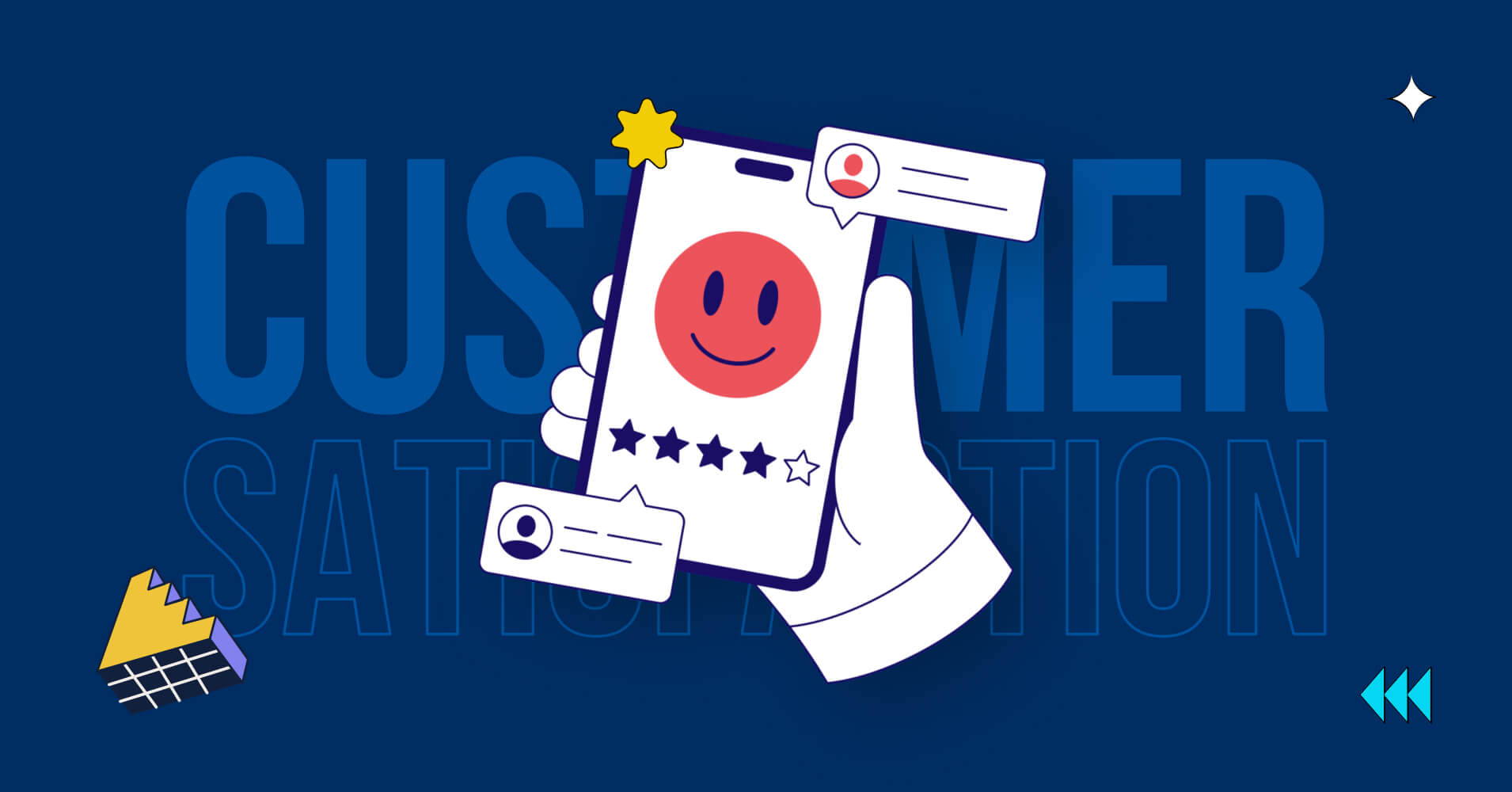
Jason Langella once said, ‘If you don’t appreciate your customers, someone else will.’ This is like ‘YOU MISS, I HIT!’
If your business fails to keep up with customer satisfaction, your competitors will seize the opportunity in the blink of an eye. Statistics show that 91% of customers who had a bad experience discontinued their relationship with the same company.
These days, measuring customer satisfaction is more crucial than ever. So, knowing how to measure customer satisfaction is undoubtedly the most effective thing you can bring to your business for sustainable growth.
This article is all about measuring customer satisfaction in the right and easiest ways. Keep scrolling.

Importance of measuring customer satisfaction
Not just as a brand measuring customer satisfaction is important, this is also critical for the overall betterment of your business in the long run. Here, we pointed out some of the obvious benefits you can expect by measuring customer satisfaction. Take a quick look below.
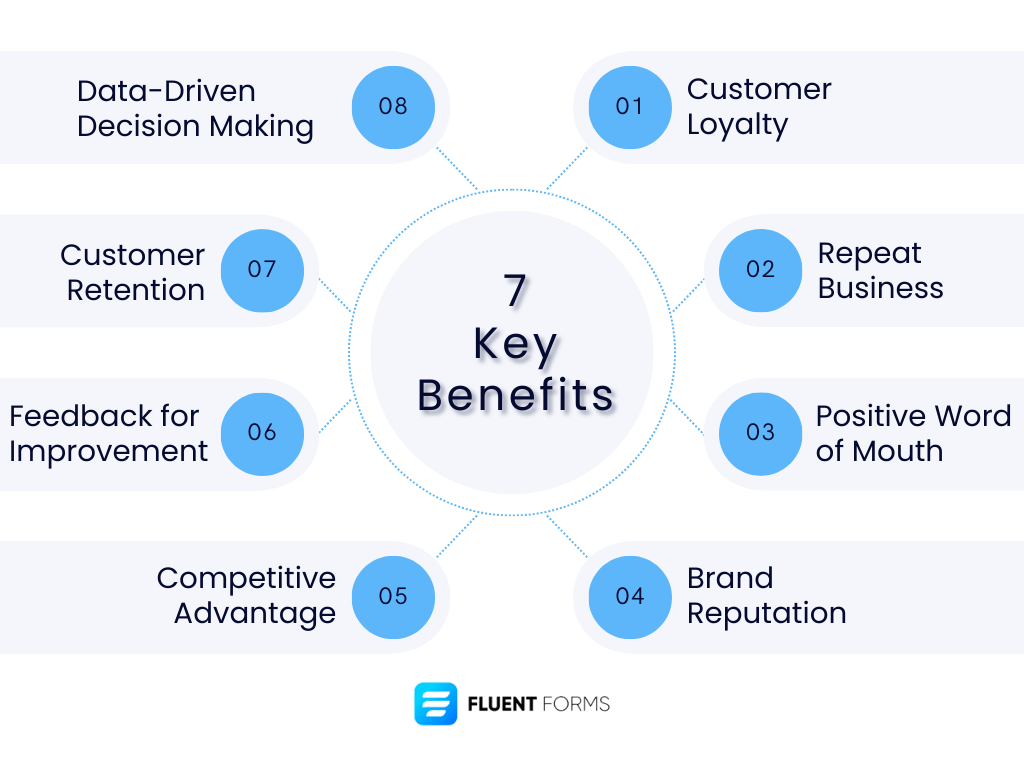
- The best one is that happy customers tend to stick around and support a business, promoting loyalty.
- Satisfied customers lead to repeat business. It creates a foundation for sustained revenue and reduced reliance on acquiring new customers.
- Happy customers become advocates of your brand. They share positive experiences and amplify a business’s reputation through word of mouth.
- Customer satisfaction is a solid link to a company’s reputation, which influences brand perception and attracts new customers.
- Consistent customer satisfaction sets a business apart in a competitive market.
- Customer feedback serves as a valuable tool for informed decisions to enhance products, services, and overall customer experience.
- Identifying and addressing issues through customer satisfaction measurement helps retain customers.
- Customer satisfaction data forms the basis for data-driven decisions, enabling businesses to strategically improve and innovate based on analyzed feedback and metrics.
Measuring how good your business is doing with your customers is solely the most crucial factor in the modern business setting. All the benefits mentioned above are achievable by connecting and prioritizing your customers.
So, how can you measure customer satisfaction effectively? Let’s find out.
How to measure customer satisfaction in 7 easy steps
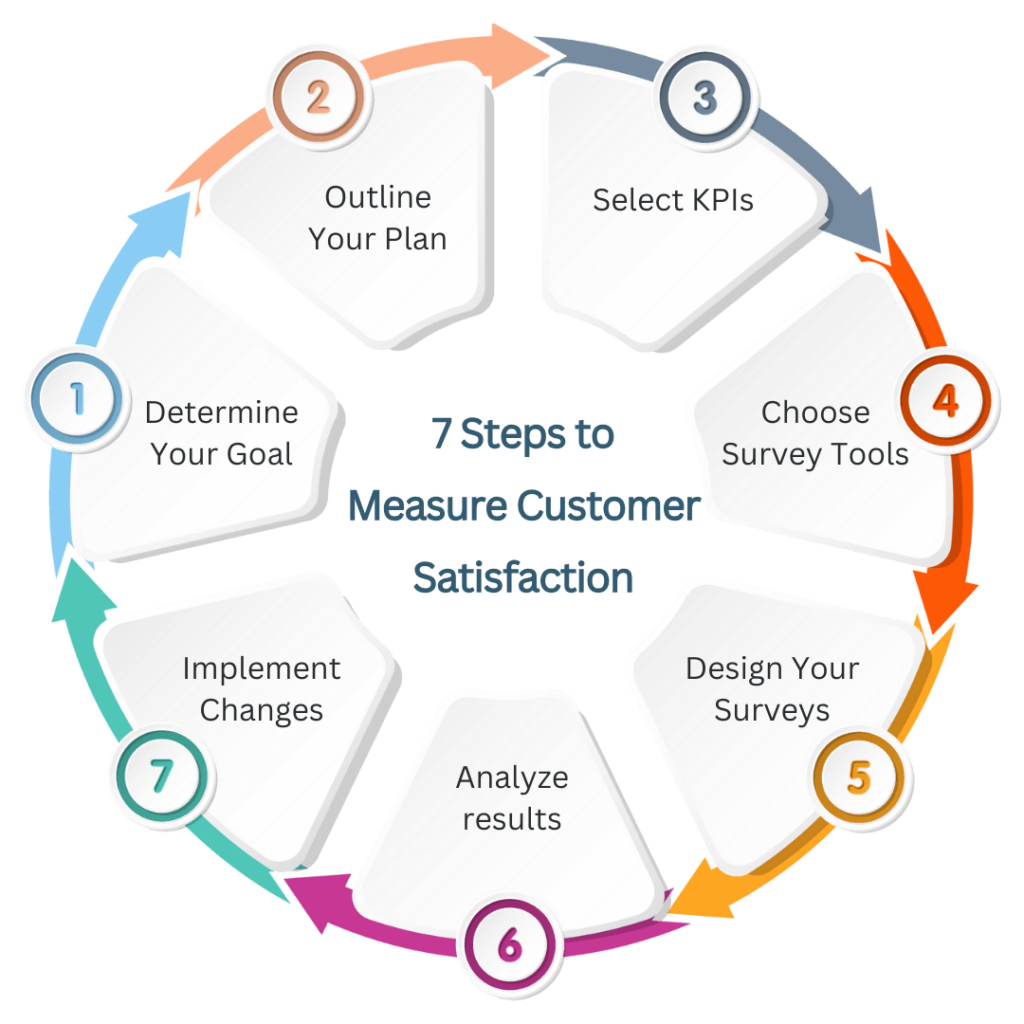
You need to follow only 7 steps to measure customer satisfaction effectively. Here are the steps explained below:
1. Determine your campaign objectives
The very first step is about defining your campaign goal. You should clearly know “Why are you doing this?”. In real business, consider the value of customer satisfaction data compared to the cost of collecting it through different methods like surveys.
If you won’t make any improvements using the data, then it would be a “So-Called” campaign. it’s better not to conduct such a survey. You should make use of the information collected to justify your efforts effectively.
Based on your business type, there’s a lot you can do with your collected data, like you can:
- Improve the overall customer experience
- Identify specific pain points
- Evaluate the success of recent product/service launch
Note that, this is common to have unsatisfied customers. The point of conducting such surveys is not necessarily the specific solution rather than stepping back and asking “What to do with our unsatisfied customers?”. So, having a clear object makes sense.
2. Outline a comprehensive plan
Now that you’ve goals in place, it’s time to outline an achievable action plan. Before gathering feedback, define how it will flow within your organization and how you’ll use the data. Here are some universal points you can consider including in your plan:
- Improve customer support quality for unhappy clients. Focus on making their interactions better.
- Identify where customers face difficulties and fix those issues for a better experience.
- Craft thoughtful live chat scripts to address new customer problems that may arise.
- Make the knowledge base a proactive support tool so customers can resolve queries on their own.
- Plan actions based on insights from segmented customers, like promoters and detractors from NPS surveys.
For example, if your NPS survey shows happy customers (promoters), make their experience even better to keep them loyal. For unhappy customers (detractors), use their feedback to fix problems and stop bad experiences from spreading.
3. Choose appropriate KPI & metrics
At this stage, you need to choose the right metrics to measure customer satisfaction. Common metrics include:
- Customer Satisfaction Score (CSAT)
- Customer Effort Score (CES)
- Retention Rate
- Churn Rate
Wondering what these metrics are all about? No worries, we will discuss them in detail in the next section. Just stay tuned and move on to the next step.
4. Choose tools for measuring customer satisfaction
Select the appropriate survey tools for measuring customer satisfaction. There are several methods you can use. The most common methods include:
- Online surveys
- Phone interviews
- Email surveys
- SMS
- Live chats
- Social media, and more
You need to find out which method fits your needs, meaning you should use the channel where your customers are available. For example, you usually interact with your clients on Facebook, but you are asking for their feedback in emails! This makes no sense.
However, we will talk more about these methods of measuring CSAT in the later part of this article.
5. Design effective surveys
Designing effective surveys is essential to obtaining meaningful and actionable feedback from your customers. Here are some key tips you should keep in mind while designing:
- Design surveys that are clear, concise, and focused
- Use a mix of closed-ended and open-ended questions
- Ensure that the questions are unbiased and directly related to your objectives
- Keep questions focused on one topic to avoid confusion
- Start the survey with straightforward and non-intrusive questions
- Organize questions in a logical order
- Assure respondents that their responses will remain confidential
- Use visual elements wisely
- Express gratitude to participants for their time.
You should be extra careful when crafting your survey questions; otherwise, your efforts may be in vain.
6. Collect and analyze results
If you aren’t sure about how to measure customer satisfaction levels and find survey data confusing, the best way is to start by carefully reviewing the feedback. Before you plan a follow-up strategy, you should get familiar with the feedback to identify strong or flawed aspects of your plans.
Once you understand the raw data, start measuring customer satisfaction (CSAT) by referring to metrics and well-developed questions. And then use the scores and results to create a strategy for achieving your defined goal.
7. Implement Changes and Communicate
Utilize the insights you gained from measuring customer satisfaction to enhance your products, services, or processes. Share these improvement updates with your customers to show that you appreciate their feedback and are dedicated to improving their experience. This not only fosters trust but also builds loyalty among your customer base.
Finally, remember that measuring customer satisfaction is an ongoing process. Regularly reassess and refine your measurement strategy to evolve with changing customer needs and market dynamics.
Okay, now let’s come to the point we promised to discuss.
5 best KPIs for customer satisfaction
Key Performance Indicators (KPIs) are crucial for monitoring and improving customer satisfaction. Here are five effective KPIs for measuring customer satisfaction:
1. Net Promoter Score (NPS)

Net Promoter Score (NPS) is the most common metric used to measure customer satisfaction and loyalty. It asks a single question to participants: “On a scale of 0 to 10, how likely are you to recommend our product/service to a friend/colleague?”
Based on the responses, customers are categorized into 3 groups:
- Promoters (score 9-10): These are highly satisfied customers who are likely to recommend your product/service to others.
- Passives (score 7-8): These customers are satisfied but not enthusiastic. They may recommend your product/service, but they are not as committed as promoters.
- Detractors (score 0-6): These are dissatisfied customers who may not only be unlikely to recommend your product/service but may also speak negatively about it to others.
To calculate the Net Promoter Score, you need to subtract the percentage of detractors from the percentage of promoters. The resulting score can range from -100 to +100. A higher score means a higher likelihood of positive word-of-mouth recommendations, while a lower score indicates room for improvement in customer satisfaction.

2. Customer Satisfaction Score (CSAT)
Customer Satisfaction Score (CSAT) is another simple metric that measures how satisfied customers are with a product/service, or experience. It asks customers a question like “How satisfied are you with our product/service?” and has them choose a response on a scale, often from 1 to 5. Here’s a breakdown below.
- Question: It asks a question about customers’ satisfaction, usually with a scale of options.
- Scale: Customers respond on a scale, usually ranging from “Very Unsatisfied” to “Very Satisfied,” with corresponding numerical values.
- Numerical Score: The responses are converted into a numerical score. For example, if using a 1 to 5 scale, a “Very Unsatisfied” response might be scored as 1, and a “Very Satisfied” response as 5.
- Calculation: The average score or the percentage of satisfied customers is calculated based on the responses received.
- Interpretation: A higher average score or a higher percentage of satisfied customers suggests better overall satisfaction, while a lower score means room for improvement.

For example, if you received 30 total responses and 20 of them were positive — your CSAT score would be 60% (20 positive responses / 30 total responses = .66 x 100 = 66%).
So, in this case, the Customer Satisfaction Score would be 66%.

3. Customer Effort Score (CES)
Customer Effort Score (CES) is a common metric used to measure how much effort customers feel they have to exert to achieve a specific goal, complete a task, or resolve an issue. It’s similar to CSAT; instead of asking how satisfied the customers were, it asks how easy it was to get the service/product customers needed.
Here’s a breakdown to simplify things:
- Question: It asks a question related to effort, such as “How much effort did you have to put into [specific task]?” The response options range from “Very Easy” to “Very Difficult.”
- Scale: The CES survey scale is usually straightforward. This allows customers to express their level of effort on a numeric or descriptive scale.
- Calculation: The CES is generally calculated as an average or percentage of the responses. For example, if using a 5-point scale, the average score might be calculated based on the responses received.
- Interpretation: A lower CES score means that customers found the experience easy and required minimal effort, which is positive. In contrast, a higher CES score indicates that customers found the experience as more difficult or requiring significant effort, meaning room for improvement.

4. Retention rate
Retention Rate is an essential metric that indicates the ability of a business to retain its customers over a particular time period. It serves as a crucial indicator of customer satisfaction and loyalty. Here are the components of the retention rate formula explained:
- Number of customers at the end of the period: The total number of customers your business has after the designated time period.
- New customers acquired during the period: The count of customers who started doing business with your company during the specified time frame.
- Number of customers at the start of the period: The total number of customers your business had at the beginning of the specified period.
Interpretation: A high Retention Rate means that a good number of your existing customers have chosen to stay with your company. This is often a positive sign, indicating customer satisfaction and loyalty.

5. Customer churn rate
Churn Rate, also known as attrition rate, is a metric that measures the percentage of customers who stop using your product or service over a specific period. It is a key indicator of business health. Don’t get confused that churn rate and retention rate are related metrics, but they measure opposite aspects of customer behavior.
Here are the components of the Formula explained:
- Number of Customers Lost During Period: The total number of customers who stopped their relationship with your company during the specified time frame.
- Number of Customers at the Start of Period: The total number of customers your business had at the beginning of the specified time period.
Interpretation: A higher Churn Rate indicates that a larger percentage of customers have stopped using the product or service, which may be a cause for concern. Conversely, a lower Churn Rate suggests better customer retention and stability.

So, these 5 best KPIs for customer satisfaction provide you with a comprehensive understanding of customer satisfaction, covering recommendations, overall satisfaction, ease of interactions, and customer loyalty.
Now, let’s explore the medium you can use to measure customer satisfaction effectively.
5 best tools for measuring customer satisfaction
Here are the tools you can use to conduct your customer satisfaction survey. Take a look below.
- Online surveys: Online surveys are one of the best tools for measuring customer satisfaction. This is an easy and quick solution to collect data. The online survey tools offer excellent features to view the entries, generate reports, export results, and much more.
- Marketing e-mailers: Emails are an awesome medium for engaging with your customers and collecting quality feedback. Customers who have signed in to receive updates will be happy to hear from you. So, this is a great way to conduct surveys by sending questionnaires or adding links in newsletters.
- Social media: Social media has changed the way users provide feedback. On social platforms, people are more candid and honest about their experience with any business. If your business has a great social presence, you can conduct a fruitful customer feedback survey using social platforms. You can use features like polls, reviews, etc. to get the maximum output.
- Live chats: These days, almost every business has a dedicated brand website and these websites are great sources of information. Therefore, live chats within your website can help you directly connect with your customers and provide them with your assistance, and at some point, you can ask them for their valuable feedback.
- Short message service (SMS): This is one of the best tools for measuring customer satisfaction. SMS are very convenient for participants and it is proven that SMS surveys have high response rates. So, if you have great connections with your customers and you have their phone numbers, then this can be your fruitful survey medium.
In measuring customer satisfaction, there are some universal best practices to conduct an effective survey. Let’s discuss them briefly.
Best practices in measuring customer satisfaction
Here are some best practices to consider when you are measuring customer satisfaction for your business:
- Clearly define what you want to achieve from the survey. Outline the goals and objectives properly.
- Select Appropriate Metrics as we’ve discussed earlier. Choose based on your business needs.
- Use a combination of metrics, this will help you get deeper insights about your customers.
- Choose the right moments to ask customers for their feedback.
- Keep your survey simple, clear, and concise. Avoid overwhelming and lengthy surveys.
- Utilize multiple feedback channels to reach your maximum customers.
- Regularly track and analyze customer satisfaction trends over time.
- Segment feedback based on customer demographics, behaviors, or other relevant factors.
- Take action based on the insights you gained.
These best practices in measuring customer satisfaction can establish effective and meaningful processes for conducting the survey, which will eventually lead to better customer relationships and business success.
Now, let us introduce you to the best customer satisfaction survey tool in the market to assist you in conducting your surveys.
Fluent Forms: The best customer satisfaction survey tool
Do you know what the biggest challenges of customer feedback are? Practically the most difficult things are categorizing, assigning, reporting, notifying, and acting on the data you gained smoothly and quickly.
This is where Fluent Forms is irreplaceable in terms of creating customer satisfaction measurement forms or feedback forms effortlessly and efficiently.
Fluent Forms is the most lightweight and user-friendly form builder plugin for WordPress. While it requires no coding skills, you can still do a ton of advanced things swiftly using solid form-building features.
The fun fact is that with Fluent Forms you can have a huge collection of customizable pre-build templates. So, whether you want to create your surveys from scratch or use templates, this plugin can help you get things done in no time.
Lastly, Fluent Forms now powers over 500K businesses worldwide in their form-building efforts, including surveys, and this plugin can do the same for you. Effectively and Efficiently.
Let’s draw an end line by recapping the pin-points we’ve discussed.
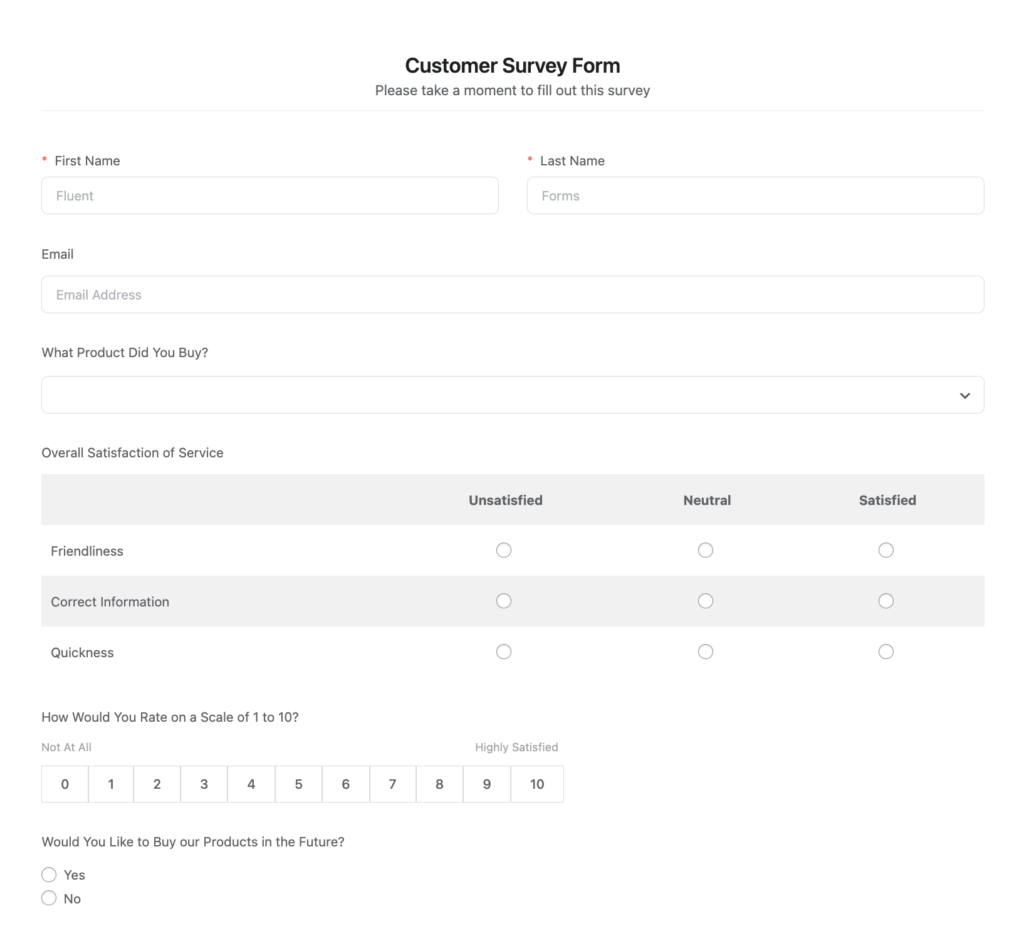
Recap the main ideas
So far we’ve discussed the critical role of measuring customer satisfaction for business success. The 7-step guide covers defining objectives, choosing appropriate metrics, and implementing changes based on insights.
We’ve explored 5 key KPIs; NPS, CSAT, CES, Retention Rate, and Churn Rate, along with mediums like online surveys and social media for effective measurement.
And with the best practices in mind, a survey tool like Fluent Forms can help you go the extra mile and get the job done very effectively and quickly.
Finally, now you know how to measure customer satisfaction. So, start measuring customer satisfaction for your business today and establish a brand that people love.


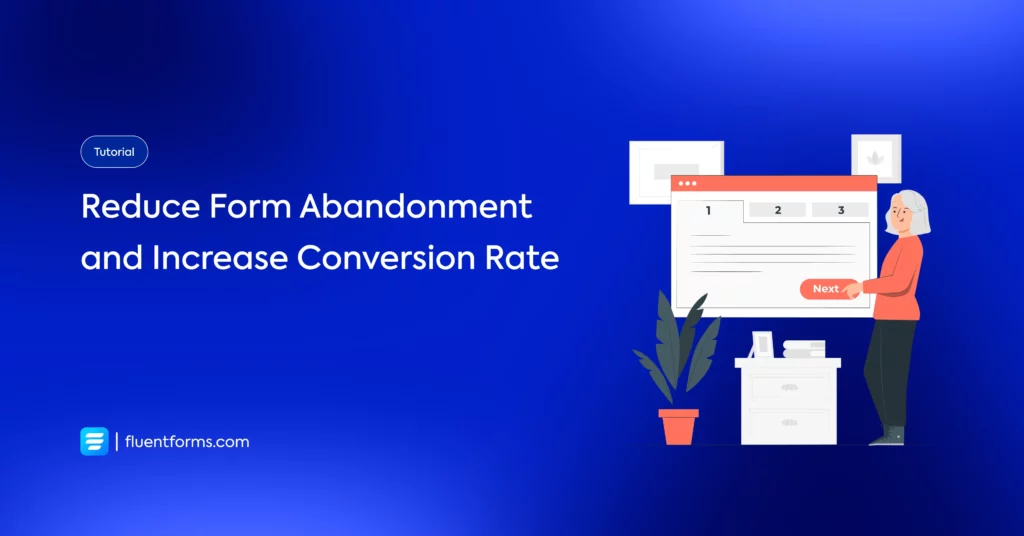





Leave a Reply
You must be logged in to post a comment.